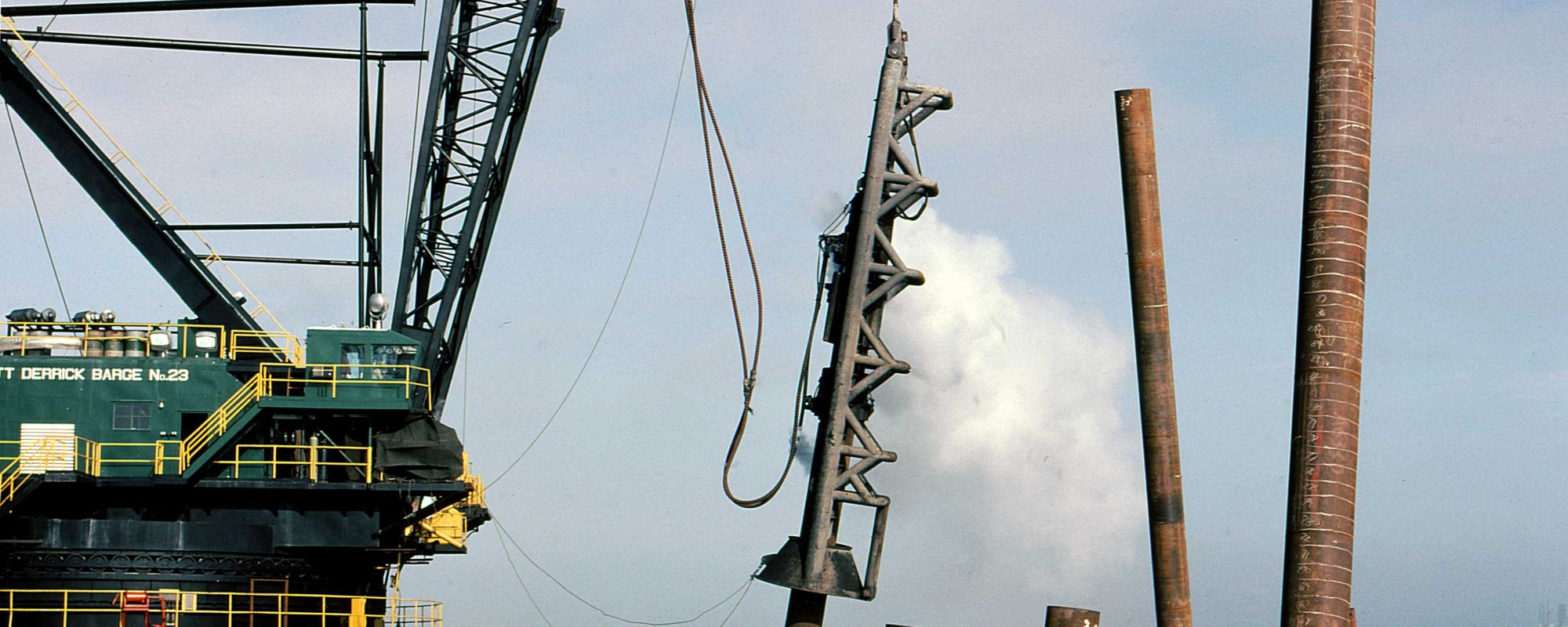Although Vulcan exported its pile driving equipment from the start, it was it’s foray into the offshore oil business that gave Vulcan a truly international perspective. That perspective put some of the world’s “hot spots” into its field of interest, and two of them are very active these days: Hong Kong and the Straits of Hormuz.
Most of Vulcan’s activity in East Asia was in South East Asia; thus, its main “centre of focus” for its equipment and travelling personnel was Singapore. With Vulcan’s sale of its first pile hammer package to the Petroleum Corporation of the People’s Republic of China in 1981, Hong Kong became of interest. At the time China was a very closed country; Hong Kong acted as a window to the world, although from a commercial standpoint Vulcan didn’t use it that way.
The UK’s decision to return the entire colony to the People’s Republic when the lease on the “New Territories” (the area of Hong Kong north of Kowloon and excluding that and Hong Kong Island) expired in 1997 was formalised in 1984; however, rumours swirled about a handover years before. The attitude of Vulcan’s business associates towards such a reintegration was bluntly summarised by one of them: “They’ll screw it up.” The contrast between the state socialism of the People’s Republic and the free-wheeling capitalism of Hong Kong was pretty stark, and it was hard to imagine that the former would allow the latter to go on in the same way for any length of time.
Up to now the PRC has surprised many people with the relatively light hand they’ve actually had on Hong Kong. Some of that was the desire of the PRC to have Hong Kong be a “model province” for the “capitalist roaders” in the rest of the country, an incentive for economic development. Another factor was to make the reintegration of the greatest “wayward” region–Taiwan–more attractive to those on the island. Still another was the PRC’s desire to maintain Hong Kong as an economic powerhouse and thus contribute to the country’s overall prosperity.
Such desires have butted up against two things: the linking of Hong Kong’s people of free expression to economic freedom, something the mainland has avoided, and recent changes in the Chinese leadership. Now the latent conflict of the two is out in the open. The Chinese leadership will have to tread carefully; if they don’t, they could fulfil my business associate’s prophecy and China will be the worse for it.
The Straits of Hormuz has been the central “choke point” of world oil shipments for many years. The Persian Gulf is ringed by oil-rich nations and 20% of the world’s oil supply passes through it. That vulnerability really came into public consciousness with the Yom Kippur War and the first “oil crisis” of 1973. It wouldn’t take much to mine or otherwise sabotage the Straits of Hormuz, which increased the Western military interest in the place.
The countries that ring the Gulf have been aware of this vulnerability for a long time. Saudi Arabia built its Yanbu oil terminal on the Red Sea in an attempt to provide an alternative to the Straits. Vulcan’s first contact with and sale to the Korean contractor Hyundai was due to the fact that they were contracted to build this terminal and need pile driving equipment to accomplish it. On the other side Iran was looking to build a major port at Chabahar on the Indian Ocean using Vulcan’s long-time customer Brown and Root, but the 1979 Revolution stopped that effort. (The Islamic Republic built a port there, currently operated by India.)
With the Sunni-Shia divide and the ill-conceived war in Iraq (which deprived the two sides of a buffer) the Straits had opponents on both sides, and it was only a matter of time before it would become a hot spot once again.
The amazing thing in both these situations is not that they’re points of conflict, the amazing thing is that it has taken as long as it has to reach the current situation.



One thought on “Hong Kong and the Straits of Hormuz: It’s Amazing It Took This Long”